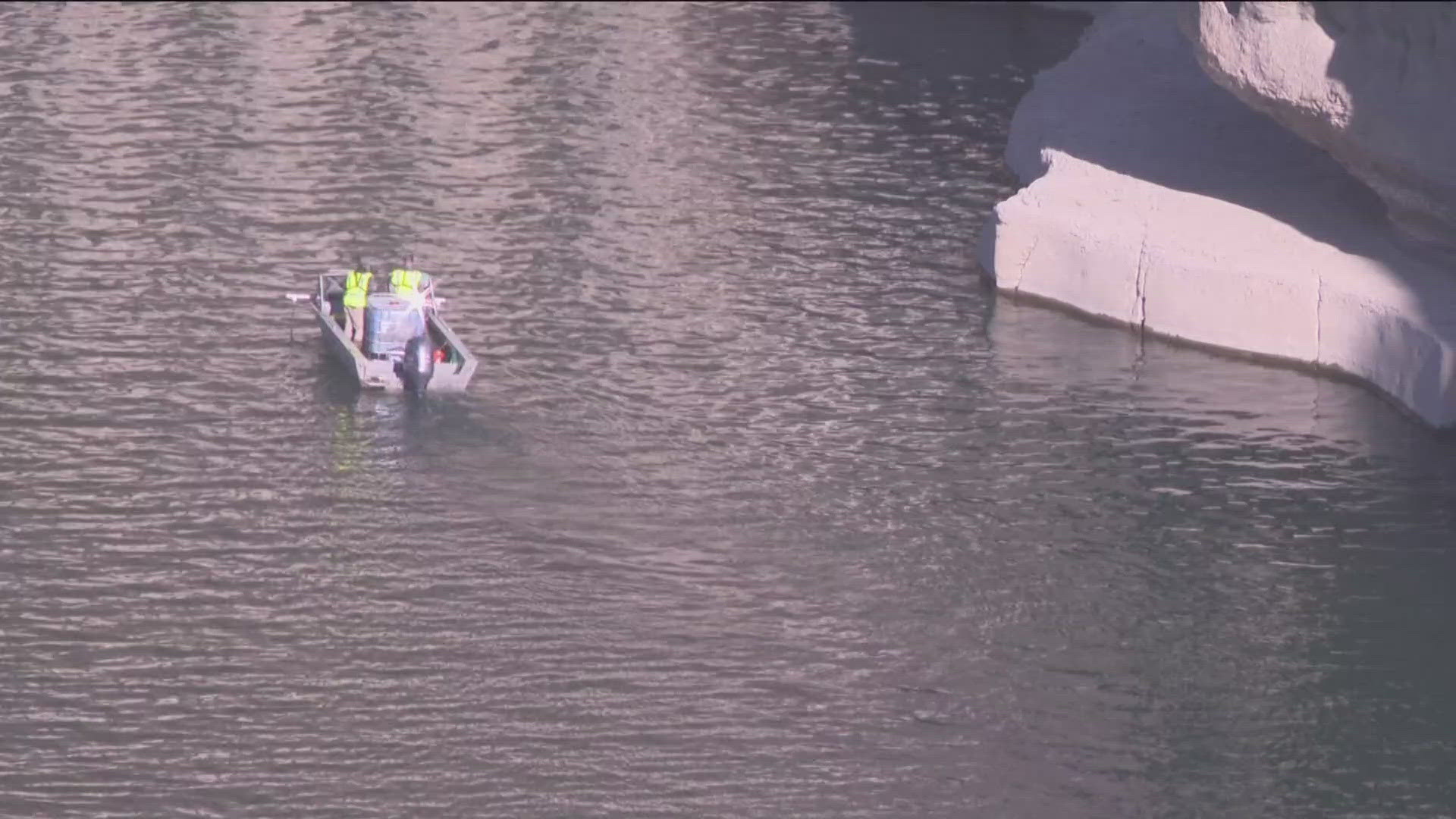TWIN FALLS, Idaho — For the second year in a row, an aggressive treatment is flowing into the mid-Snake River to kill off quagga mussels that threaten Idaho's waterways, irrigation and recreation.
The invasive mussels were first found in a section of the river near Twin Falls in September 2023. A round of treatment last year killed off a significant number of the quagga mussel population, but the Idaho State Department of Agriculture (ISDA) is starting another round of treatment after more mussels were found in the river last month.
Last year's aggressive treatment plan was a first-of-its-kind and scale in the country. The treatment was followed by extensive sampling, with the help of additional funding from the state to fight the mussels.
"We did genetic confirmation and found a much smaller infestation or presence of muscles here than last year, but we certainly found some here," ISDA Deputy Director Lloyd Knight said. "So we immediately went into that mode of knowing that we needed to treat again."
In 2024, the ISDA is treating the stretch of river between the Twin Falls Reservoir and Centennial Park. The treatment has moved further upstream compared to last year, after two quagga mussels were found in the reservoir above the Twin Falls Dam.
The ISDA is using a copper-based formula called "Natrix" as a treatment to eradicate the mussels that pose a threat to the environment.
"They will really out-compete anything if left unchecked and allowed to establish," Knight said. "So they'll have a significant impact on food availability for the entire aquatic system. They'll have impact on fish habitat. Certainly for a river such as ours that people utilize for recreation, power generation, irrigation - it would severely impact all of those."
The 10-day long treatment started on Tuesday. Metered boxes with the copper-based treatment have been placed at key mix points along the treatment area. The ISDA evaluated each section of the river where a box was placed for average CFS, PH, and depth - to ensure a consistent treatment flow rate of 1 part per million (ppm).
The ISDA is also conducting a second round of treatment in November - which wasn't done last year - to clear out quagga mussels from still water and deep pools in the river.
"We think there's between 80 or 90 of those that we've been able to map so far," Lloyd said. "They are what's left after the after the high water recedes. They're not connected to the river, per se - but they're there."
Last year's treatment killed a significant number of fish in the 6-mile stretch between Pillar Falls and Centennial Waterfront Park. Fish mortality is expected again, especially in the section of river that was not treated last year.
The ISDA said they need to act aggressively to stop a potential crisis that could cost the state hundreds of millions of dollars in direct and indirect costs.
"This certainly an issue, and it's a visible distraction from folks that want to enjoy the river. It's a financial toll right now, it's a toll on our folks that are going to spend two weeks down here on the project," Knight said. "But that's a small investment compared to the damage that would be caused by these muscles if they were left unchecked."
Access to the Snake River between Hansen Bridge and Broken Bridge is closed. The treatment is expected to break down and dissipate to normal river copper levels as it moves 18 miles downstream toward Kanaka Rapid.

